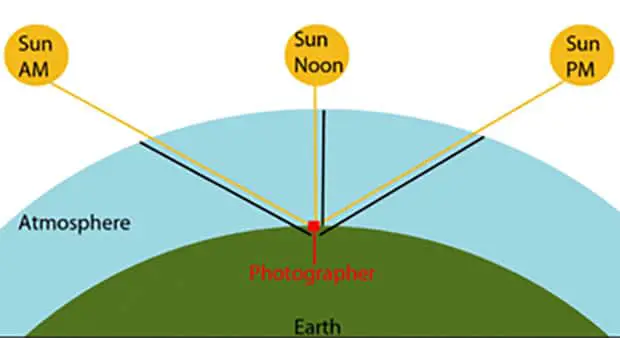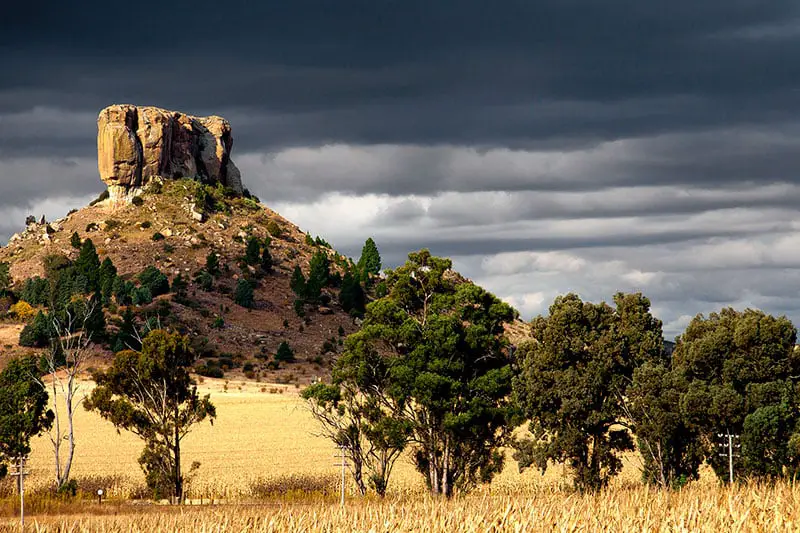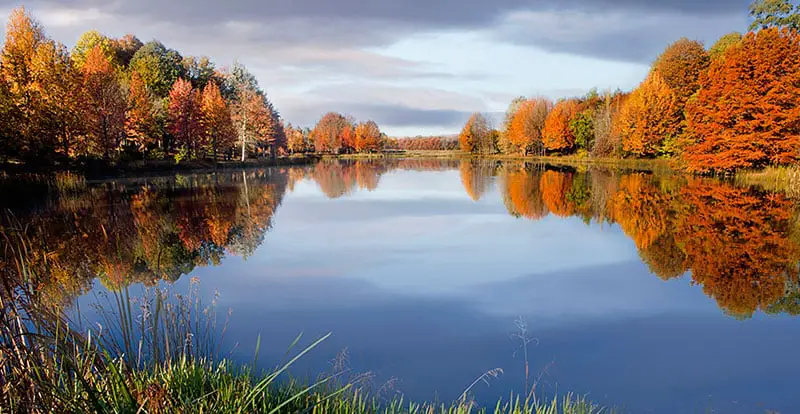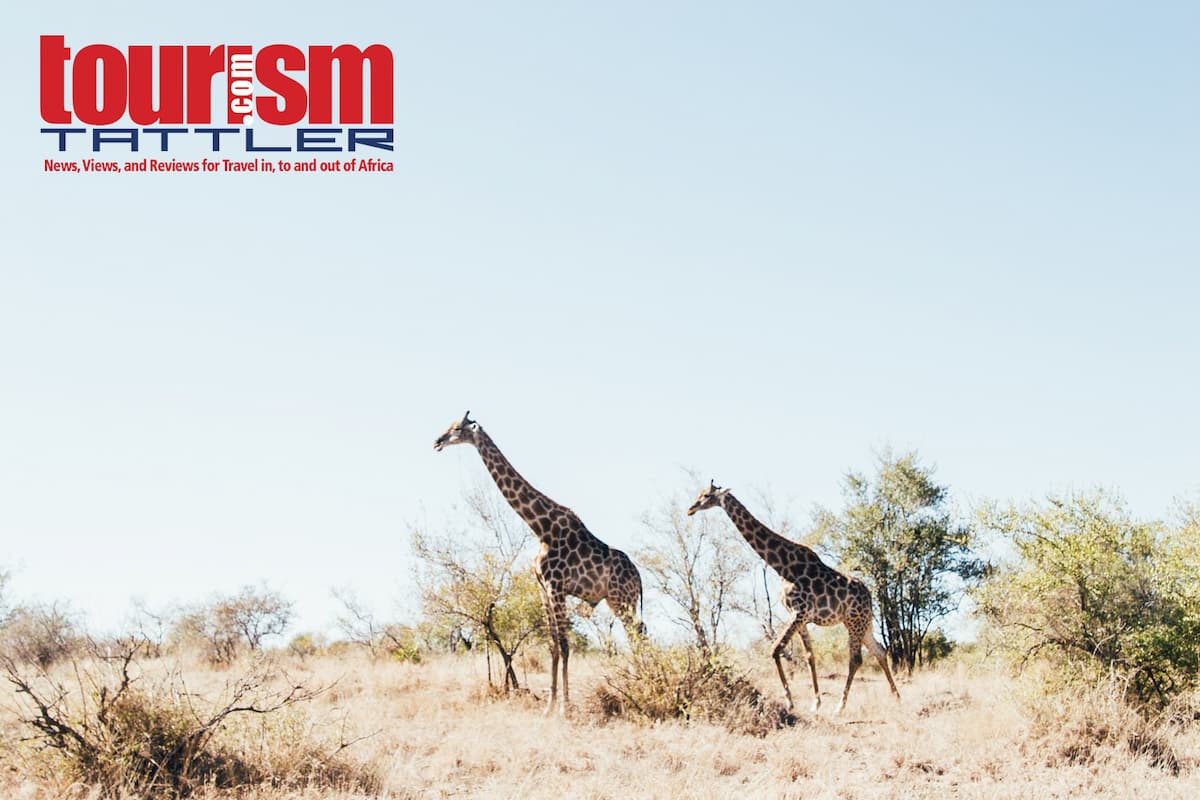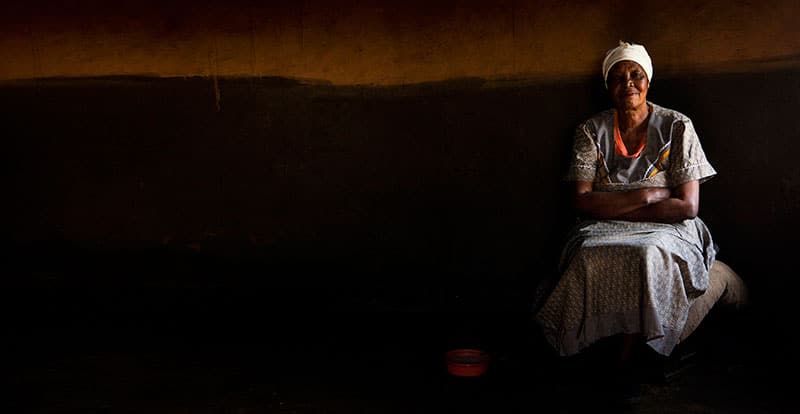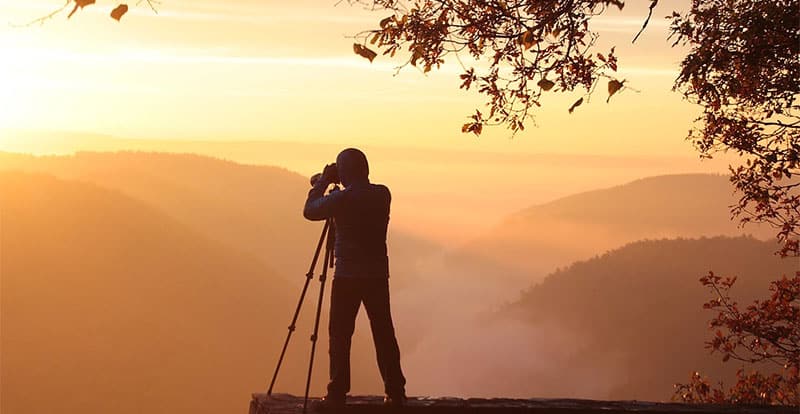Part 1: Understanding The Golden Hour
The best photographs are usually taken when the light is soft, and besides cloud cover, or smog, you can guarantee that the light will be softer in the first hour after sunrise and the hour before sunset than it would be in the harsh light of midday. By Peter Wickham.
Light conditions become clear when one determines the behaviour of light in relation to conditions in the earth’s atmosphere.
The earth’s atmosphere contains dust particles, gasses and water vapour. When light hits these atoms it scatters and therefore will arrive at your subject from differing angles; thereby filling in what should be hard shadowed area lit by a single light source.
It makes sense therefore that the more light travels through the earth’s atmosphere, the more it will scatter or become diffused and thereby soften the light recorded on a camera.
One must not be drawn into the idea that the GOLDEN HOUR is only 60 minutes. Depending on the condition of light at the location, this can vary considerably depending on location and also from day to day, even at the same location. Seasonal considerations are also very valid in determining the length of the golden hour.
There are times when we can be supplied with excellent diffused light at different times of the day, when photography is usually not at its best and usually occur, for example, when there is cloud cover or smog/fog present.
With experience and understanding, we learn to use the best conditions for the results required. Landscapes usually require more contrasted light than portraiture and therefore Portraits are best photographed with great diffusion, whereas landscapes require some direct lighting to provide depth to the image, which is provided by shadows.
Sometimes when scattered cloud exists, we can wait for partial “spotlight” sunlight to showcase our focal point in the photograph. This also has a benefit, because of hardware limitations in the dynamic range limitations of a camera, that mood is easily created by the background cloud and landscape not directly illuminated, seeming darker than in reality and hence giving a stormy mood to the shot.
It is in playing with light conditions and seeing the results that we realise what works and when.
Have fun with your camera and don’t be afraid to try different things, but be aware that 90% of the time, diffused light will produce a better photograph, so use the GOLDEN HOUR to your advantage.
About the Author: This series of photographic tips are contributed by Tourism Tattler correspondent Peter Wickham, who is a professional photographer with in excess of thirty years of experience in photography and teaching small groups and/or individual training.

